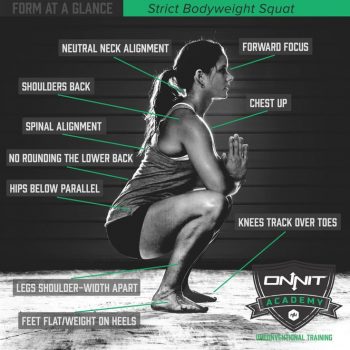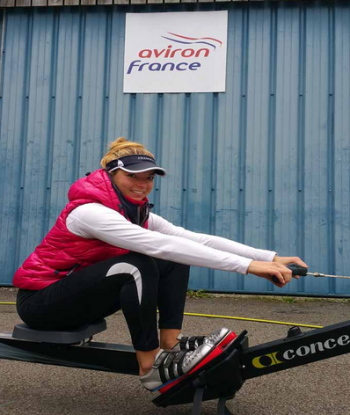Back, hip and pelvic screening for rowers – a discussion.
Most sports screen their athletes (often pre-season) to assess for issues that may increase risk of injury. Common recommendations are usually stretching or strengthening programs based on an athlete’s individual requirements.
As we have explored before with our previous blogs on back pan and injury, recent research has shown that these programs are not as useful as hoped in preventing injury although most clinicians working with rowers argue that some simple tests and recommendations can make a difference.
Below are some examples and words taken out of a recent FISA post on back injuries that we found very useful. These are easy to perform, relevant and give a good starting point for a screen of your athlete’s ability to move well with their spine, hips and pelvis in the boat.
Examples:
1) Deep squat:
The ability to deep squat, keeping the heels flat, shins relatively vertical and trunk upright demonstrates the athlete’s ability to achieve a good catch position (up on the sit-bones) without overloading the lower back.

2) Rowing specific catch position:
Positioning the rower at front stops on an indoor rowing machine can also test this. The picture below illustrates this.

3) Sit to stand:
Have the athlete move from sitting to standing position off a low step. A good performance includes the ability to keep a flat lower back and relaxed thorax, rather than ‘popping the bottom’ with the lower back going into and extended position. This seems to correlate quite closely with the rower’s ability to connect with gluts in deep hip flexion and the catch as well as having the trunk control to move the trunk with the pelvis through the first part of the drive.
4) Likewise, the ability to sit up tall with legs out in front indicates if hamstring tightness or poor endurance of muscles around the pelvis is compromising the back position. Testing endurance of the trunk and hip musculature will provide useful information regarding the athlete’s ability to perform safe movement patterns, especially when fatigued.
A few points to think about:
Are you using any screening techniques for your team and do you think about what the results of the test actually mean to the rower’s in-boat performance?
Do you have an ability to ID possible risk for the most common injuries for your athletes?
What to do next?
A general strengthening and mobility program for all athletes, regardless of screening can bring huge benefits to both performance and injury risk, as we have detailed before in.
https://batlogic.net/2017/03/09/prevention-always-better-treatment-stay-strong-reduce-injury-simple
An approach which does not consider the movement patterns required in rowing with an over emphasis on static strengthening is of limited use. Dynamic activities, which encourage the lower back to move normally in rowing patterns, are the most appropriate. Rowing Australia has designed a well-constructed program with this in mind – the link is attached below.
Thanks again to the wonderful research of the team involved with these studies and explorations in the sport;
Dr Fiona Wilson – Chartered Physiotherapist Trinity College Dublin, ex Rowing Ireland
Kellie Wilkie – Chartered Physiotherapist Rowing Australia
Sarah-Jane McDonnell – Chartered Physiotherapist Rowing Ireland
Craig Newlands – Chartered Physiotherapist Rowing New Zealand
Mark Edgar – Chartered Physiotherapist GB Rowing

